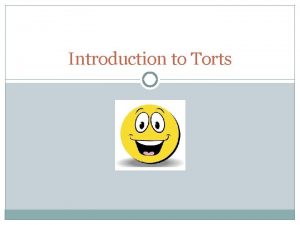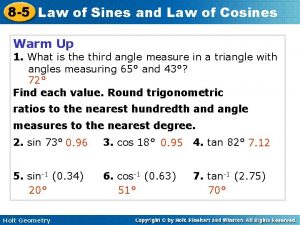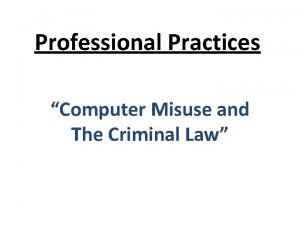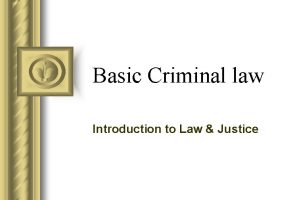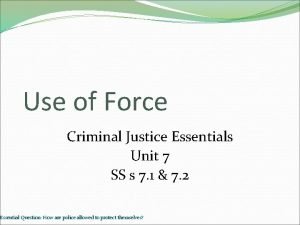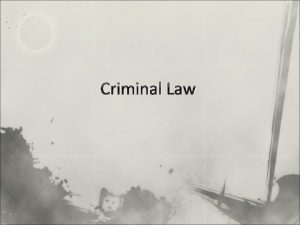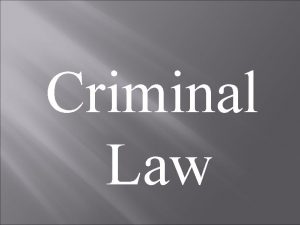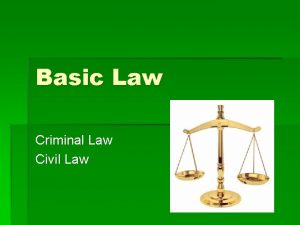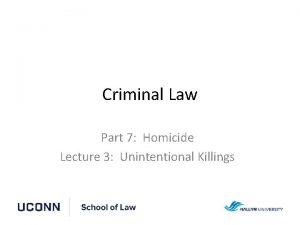Criminal Law Part 7 Homicide Lecture 4 FelonyMurder






- Slides: 6

Criminal Law Part 7: Homicide Lecture 4: Felony-Murder

Felony-Murder • The Felony-Murder Doctrine creates liability for murder when a Δ, in the course of commission of an inherently dangerous felony, which has an independent felonious purpose, “causes” circumstances in which death results – Note: the Δ does not directly cause the death • Examples: – Δ commits armed bank robbery, during which a fleeing customer trips, falls, and breaks her neck, causing death (constitutes felony murder) – Δ commits petty theft, flees the store, and the storekeeper chases Δ, trips, falls, and breaks his neck causing death (not felony murder) Criminal Law – Professor David Thaw Part 7, Lecture 4 Slide 2

Felony-Murder • Mens rea: – MPC: rebuttable presumption of “recklessness+” – CL: automatic conclusive presumption of mens rea where enumerated “inherently dangerous” felonies are involved – Both: requires mens rea for (and conviction of ) underlying felony • Three Primary Limitations: – (1) “inherently dangerous felony” – usually enumerated by statute – (2) merger doctrine – an “independent felonious purpose” must exist for the underlying felony – (3) causation – murder must result from the felony, two approaches: • Agency theory (majority rule) • Proximate cause doctrine (minority rule) Criminal Law – Professor David Thaw Part 7, Lecture 4 Slide 3

Felony-Murder • Inherently Dangerous Felony – The underlying felony upon which the conviction is based must be “inherently dangerous” – Usually enumerated by statute • Generally includes: rape, armed bank robbery, kidnapping, buglary – Sometimes includes: shooting at an uninhabited dwelling, arson, grossly negligent discharge of a firearm, reckless/malicious possession of a destructive device (usually an explosive) • Generally excludes: child endangerment/abuse, false imprisonment, practicing medicine without a license, grand theft, conspiracy, possession crimes, extortion Criminal Law – Professor David Thaw Part 7, Lecture 4 Slide 4

Felony-Murder • Merger Doctrine: – An “independent felonious purpose” must exist for the underlying felony, separate from the act which directly led to the death • e. g. , assault, battery, child abuse, manslaughter all do not qualify felony-murder because the felony action taken was the actual cause of death and did not have an independent purpose Criminal Law – Professor David Thaw Part 7, Lecture 4 Slide 5

Felony-Murder • Causation – two (mutually exclusive) approaches: – Agency doctrine (majority rule): the death must be caused by acts in furtherance of the felonious purpose – Proximate cause doctrine (minority rule): any resulting death, provided it satisfies proximate causation, can be the basis of felony murder • This rule can become quite obnoxious – see State v. Sophophone Criminal Law – Professor David Thaw Part 7, Lecture 4 Slide 6

